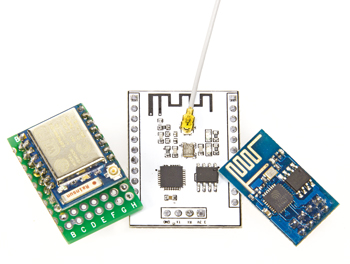WLAN for Microcontrollers
Take control with an ESP8266

This is a MEMBER ONLY article. You need a subscription to read this article.
- Unlimited access to online Member Only articles
- 3 new editions Elektor Magazine (digital)
- More than 5000 Gerber files
- 20% member discount on e-books (at elektor.com)
- 10% member discount on Products (at elektor.com)
Available from €5.33 per month.
What is Members Only
Elektor is committed to providing high-quality content on electronics, catering to tens of thousands of paying members. As part of this commitment, Elektor has launched Premium, an initiative that offers exclusive online articles to members sometimes even before they appear in the magazine.
Every day, members can access in-depth articles that showcase the best of Elektor's premium content.
This initiative aims to reward members with early access. Once logged in, members can easily enjoy this exclusive content and engage in discussions about featured projects. While Premium adds to the existing resources available, Elektor will continue to provide a wealth of free information.
Join the Elektor community today to take advantage of Premium and other benefits!
Extra info / Update
Processor Tensilica L106, 32-bit
Processor clock 80 / 160 MHz
RAM memory 32 + 80 KB
Flash memory Max. 16 MB, typically 512 KB to 1 MB
Operating Voltage 3.3 V, not 5 V tolerant
Current 10 µA to 170 mA
GPIO port count 17, including I2C, SPI, UART, PWM multiplexed
Analog port count 1, 10-bit resolution, input range 0 to 1 V
WLAN standard 802.11 b/g/n/....
Simultaneous TCP channels Max. 5
Supported functions (Modi) Station, Accesspoint, Station+Accesspoint



Discussion (0 comments)